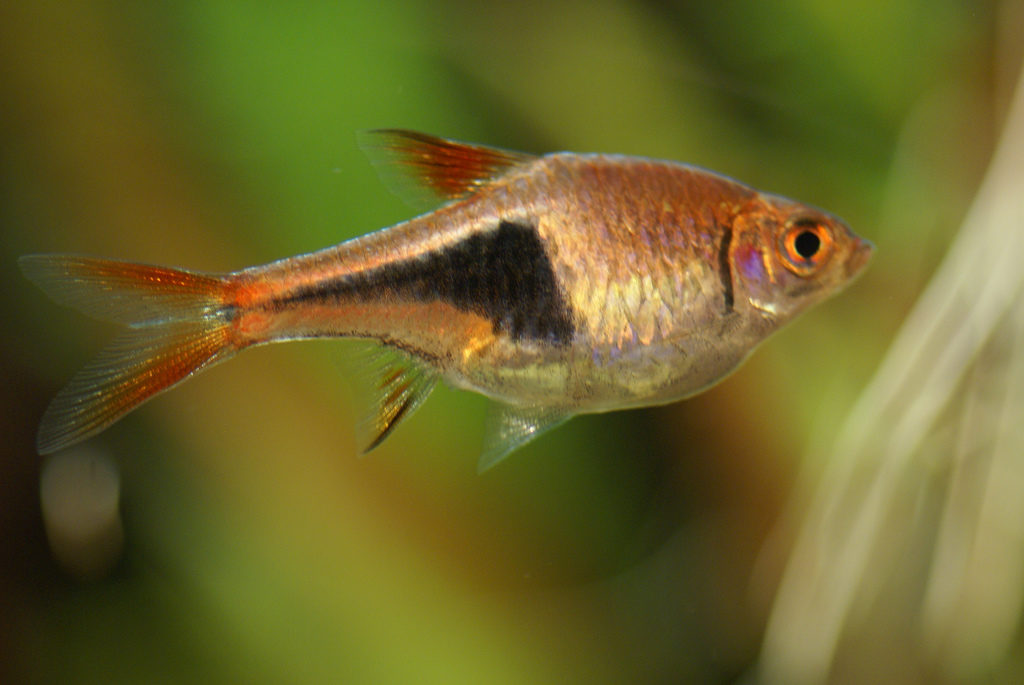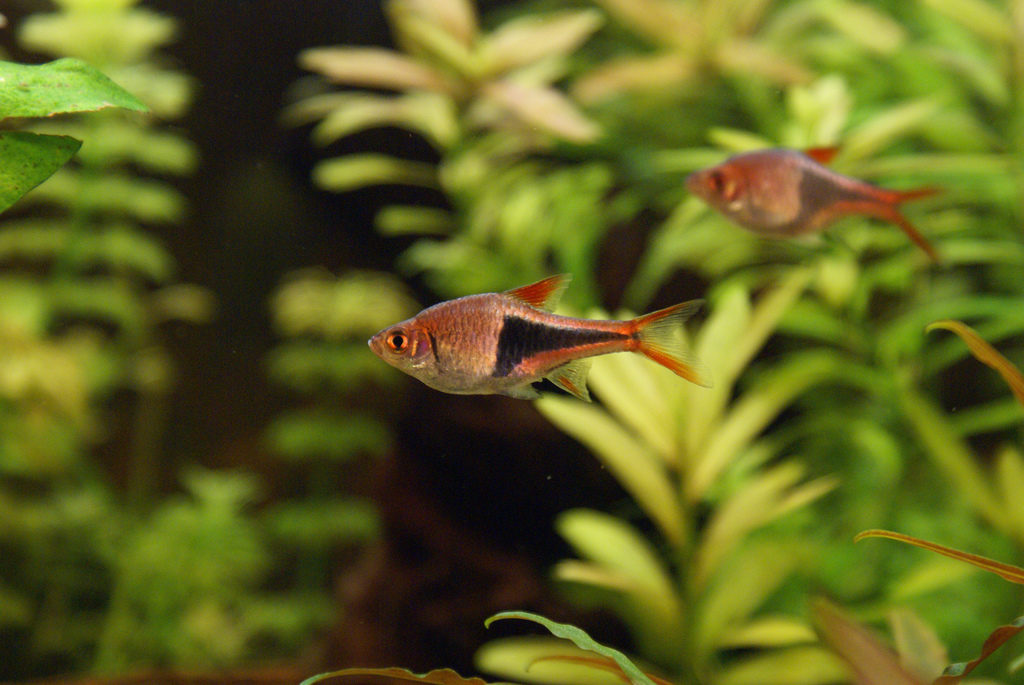harlequin barb presented – Everything about Keeping, breeding, socialization and care of the harlequin rasbora. Some call them harlequin barbs and others call them rasbora. No matter which name is used, these fish from the group of barbels are certainly one of the most popular in our domestic freshwater aquariums. The Trigonostigma heteromorpha belong to the carp-like fish. Here we want to inform you about everything worth knowing about this fish. Of course he plays again Characteristics, as far as attitude and care are concerned, play a major role.

Origin and habitat of the harlequin rasbora
The origin of these fish is in Singapore. That's where they were first discovered. The entire distribution area extends over the south-east of Thailand. There the fish live in particularly soft water with a hardness of less than 3 degrees. In our realms rather only very rarely to be found. Today, however, harlequin rasbora is no longer bought as a wild catch, but is bred very successfully. Large breeders can be found all over the world, with Thailand also seeming predestined here. In addition, there are also breeds in Europe such as Poland or the Czech Republic.
In nature, the fish usually live in densely overgrown shore areas. The waters are very clear and have a rather low current.
In the case of the harlequin rasbora, a subspecies often comes up for discussion, which is known under the name of Hengel's harlequin rasbora. This species is called Rasbora hengeli in Latin. The normal harlequin barb is also called Rasbora heteromorpha. Especially the Hengels harlequin rasbora impresses with its special coloring. It tends to turn pink, especially in low light.
Appearance and characteristics of the harlequin rasbora
Now let's get to the looks. Basically, the most important distinguishing feature of barbels is their barbels in the mouth area. Unfortunately, you can't see them, especially in smaller species, or they are so tiny. This is also the case with the harlequin rasbora. The recognition of the fish based on the barbels does not seem to be possible here. The fish are rather high-backed and have a stocky shape. However, harlequin rasbora have a very specific identifying feature, which is already contained in the name of the fish. The named wedge, which is very dark to black, sits in the rear part of the body and forms a kind of triangle. Of course we have also attached a picture, which should show the fish very well. The mouth of a barbel is upright, which in turn is also reflected in the habitat. It lives in the middle water area. The rest of the coloring of the body of the harlequin rasbora is white to silver and shimmers very nicely, especially due to the rather larger scales. With a certain lighting you can see a lot more drawings here.
Harlequin rasbora can also be seen in other colors. Various breeds can also produce specimens with a pink or purple glow.
The harlequin rasbora grows up to 4,5 cm in size, whereas the Hengels harlequin rasbora tends to be smaller.
The distinction between males and females is not always easy here. On the one hand you can see a more intense coloring in the males and on the other hand you can also see a larger wedge in the males. He then sees his mouth further forward. There is little difference in size.

Keeping and caring for harlequin rasbora
Let's just come to the attitude and the demands of the fish, which they need to feel comfortable in our aquariums. Let's start with the size of the pools. These should not be less than 60 cm edge length. Harlequin rasbora should not be kept under 60 liters and even with this size you will not be able to keep a particularly large group. See also ours stocking suggestions.
In any case, the animals should be kept in a group of 6 or more fish. They are pronounced shoal fish and usually live in very large swarms in nature.
When it comes to temperature requirements, you should make sure that you set your water to 22 to 28 degrees. Values of 5 - 7 can be considered suitable for the PH value. The hardness should be in the range up to a maximum of 15. As already mentioned, they prefer soft water. Especially if you want to breed fish. You need different water here, because breeding is not as easy as with other species anyway. But more on that later. In their natural origin they have very soft water. The offspring have made the fish much more robust.
Harlequin rasbora prefer darker tanks which should also be very well planted. Dense planting and quiet areas should definitely be available. This is the only way for the fish to feel comfortable in the aquarium.
By the way, the fish can live up to 6 years.
Socialization of the harlequin rasbora
Of course, the above-mentioned things must also be observed when socializing the animals. Above all, the fish can be socialized very well with other barbels. But the animals should go well together. Harlequin rasbora are rather lively.
Of course, harlequin rasbora can be seen again and again in a community aquarium. There they are usually with the well-known livebearers like the Guppies or the platys held together. An association with terrestrial species such as the armored catfish or the L catfish like that catfish is also no problem.
[the_ad id = “1019 ″]Breeding of harlequin rasbora
Let's come to the breeding of harlequin rasbora, which can be described as rather demanding and is certainly only possible to a limited extent in a community aquarium. This will usually be possible in a species aquarium. Before you start breeding, you should adjust the water parameters accordingly. A PH value below 7 and very soft water is used for this. We would aim for a maximum value of 5 degrees. Without a corresponding osmosis system this will not be possible. In addition, the planting of the aquarium must also fit, because the harlequin rasbora is not a viviparous species, but spawning takes place here. The fish prefer to spawn on leaves. Therefore, you should also ensure that large-leaved plants are used in the aquarium. The small one seems predestined here Cryptocoryne (water cups) be.
You also have to start a pair accordingly alone for breeding. You should also make sure that you remove the animals from the tank after successful spawning and the associated fertilization, because harlequin rasbora like to eat their own spawn. We therefore recommend watching closely, otherwise you can miss the appropriate time.
The young will hatch after just one day. They should be fed accordingly. Rearing feed in the form of Artemia is particularly suitable for this.






